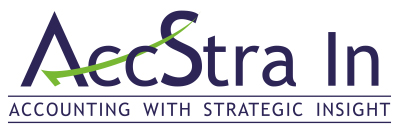Reference – http://suryasahal.com/block-chain-and-finance/
Blockchain – Well to define it in simplest of terms.
Blockchain would mean a Block which contain and records anything of value assigned to it.
And chain is the link between multiple similar blocks which are globally distributed with millions of users and updated regularly.
So why is Blockchain different say from a movie disk?
well the difference is in its clever coding.
Anything digital could be copied with the click of a button. A quick look at the movie industry and album sales tells the piracy story compellingly.
The picture below should give a visual understanding.

Blockchain
Now coming to Accounting and Finance.
Modern financial accounting is based on a double entry system. it solved the problem of business owners by letting them know whether they could trust their own books. However, to gain the trust of outsiders, independent auditors were required to verify the company’s financial information and certify the same yet we had Major audit frauds.
Each audit is a costly, time consuming and a post mortem job.
In order to negate the cost , time and frauds Block chain can play a key role.
Blockchain technology may represent the next step for accounting and Auditing:
Instead of keeping separate records based on transaction receipts, companies can write their transactions directly into a single joint register (maintained by both the parties), creating an interlocking system of enduring accounting records. Since all entries are distributed and cryptographically sealed, falsifying or destroying them to conceal activity is practically impossible.
In a technical perspective, this is how it works –
Block chain contains a block in which data is collected and processed through a process called mining. The block is identified using a cryptographic hash (also known as a digital fingerprint). The block formed will contain a hash of the previous block, so that blocks can form a chain from the first block ever (known as the Genesis Block) to the formed block. In this way, all the data could be connected via a linked list structure.
Not going technical any more – Let’s break down the above and see how it helps accounts and finance.
Decentralized Data storage among users
Each party on a blockchain has access to the entire database and its complete history. No single party controls the data or the information. Every party can verify the records of its transaction partners directly, without an intermediary.
This independence helps by reconciling automatically between parties being vendor, customer etc. and saves time for auditors from getting third party balance confirmations.
Back dated entries or Irreversibility of Records
Once a transaction is entered in the database and the accounts are updated, the records cannot be altered, because they’re linked to every transaction record that came before them (hence the term “chain”). Various computational algorithms and approaches are deployed to ensure that the recording on the database is permanent, chronologically ordered, and available to all others on the network.
Controls in place to avoid manipulation of records – If changes are made they are recorded completely. (Back dated entries and cut off procedures improved)
Speed, accuracy and on time update of records
With stock market trading in paper format, the time frame for clearing and settlement of a transaction is generally referred to as ‘T+3’ – that is, three days after the trade (T), the transaction is settled. With blockchain technology, the entire lifecycle of a trade – execution, clearing and settlement – occurs at the trade stage only .
Computational Logic and IOT
The digital nature of the ledger means that blockchain transactions can be tied to computational logic and programmed. So, users can set up algorithms and rules that automatically trigger transactions between nodes.
Well now connect the above with batch processing of AP records for payment, Mile stone based payments if the parameters are met things are executed with complete automation.
If IOT is used with Block chain and intern linked with accounts and finance, we can have an automated process for sales forecasting also.

IOT and Powerlines
Eg: – IOT in power transmission lines can let us know when there is power outage requiring an uptime maintenance which is communicated with Blockchain technology in real time – The pattern from above will increase the accuracy of predictive maintenance
Conclusion –
For the first time in human history, two or more parties, be they businesses or individuals who may not even know each other, can bind agreements, make transactions, and build value without relying on intermediaries (such as banks, rating agencies, and government bodies) to verify their identities, establish trust, or perform the critical business logic
Blockchain seems to be a dramatic shift in secure data exchange process which can alter the finance stream completely but nevertheless implementation and resistance to change will take its own time.
Regards
